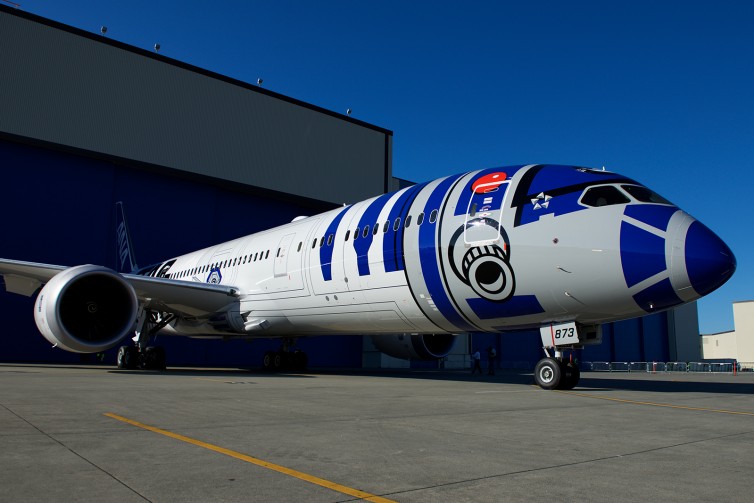
JA873A, better known as “The R2-D2 plane” rolled out of the paint hangar – Photo: Bernie Leighton | AirlineReporter
It’s finally here!
We’ve waited months to see ANA bring their cross-promotion with Disney Japan for Star Wars: The Force Awakens to light, and boy was it worth it!
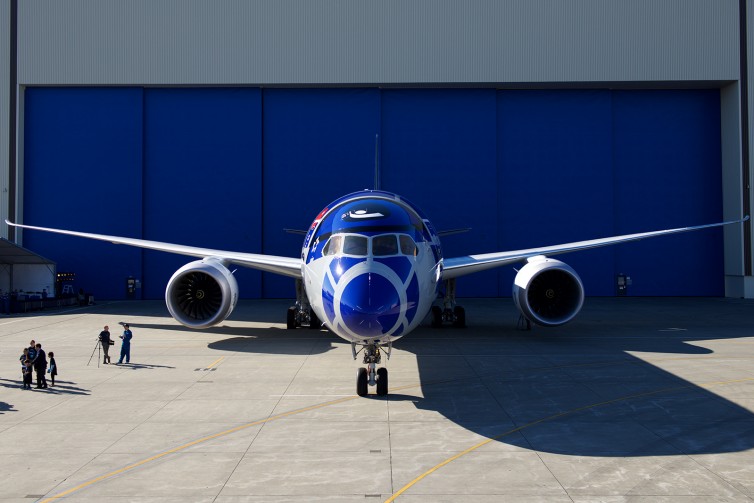
Just look at it! The attention to detail is stunning! Photo: Bernie Leighton | AirlineReporter
This aircraft is, of course, the first of three in the ANA Star Wars line. ANA takes its partnership with Star Wars seriously. How seriously?
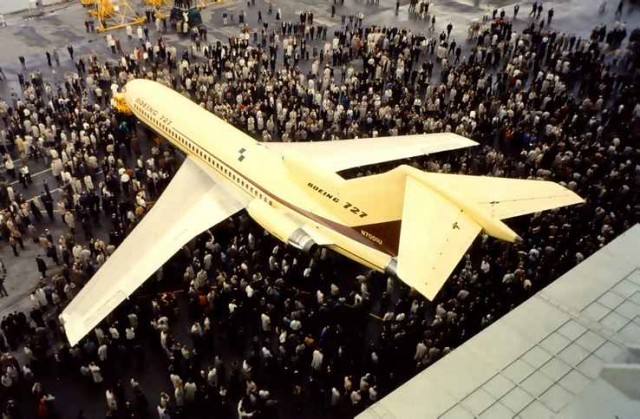
Roll-out of E1 (N7001U) from Boeing Renton Plant, 27 Nov 1962 – Photo: Bob Bogash
More than 27 years after it was gifted to the Museum of Flight, the first Boeing 727 is still being restored at the museum’s Restoration Center at Paine Field in preparation for its last flight down to Boeing Field.
This plane first rolled out of the factory on November 27, 1962, and took its first flight (from Renton Field to Paine Field) on February 9, 1963. It was then used for a year as a Boeing test flight aircraft before being delivered to United Airlines on October 6, 1964.
With United, it flew 64,495 hours, with 48,060 take-offs and landings. After being repainted to its original livery, N7001U flew, in January 1991, from Boeing Field to Paine Field, where it has been sitting ever since.
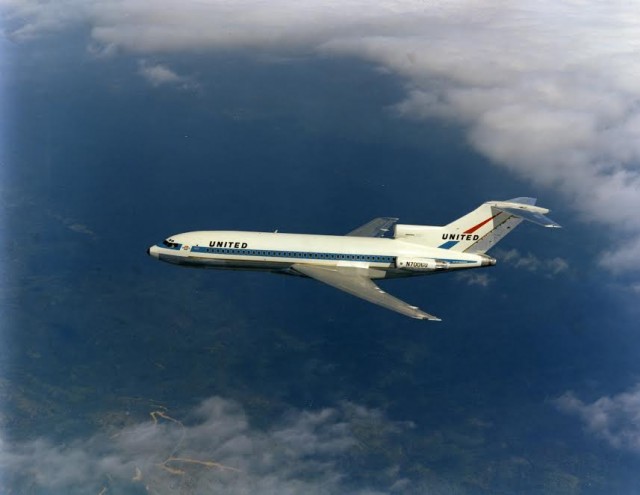
This is N7006U, but N7001U sported this same livery in 1964 – Photo: The Boeing Company
Restoration work has stopped and started more than once over the years. Some restoration work started in 1997, but was hampered by the lack of 727 parts. (United had removed any usable components to support their other 727s still in service at the time). Sadly, the plane was left open for several years after it was delivered, and many parts “disappeared” during that time, as well.
A new restoration effort started in May of 2004, after the donation of N124FE (aka Marcella) from FedEx. That plane had the majority of the components needed, but additional parts were taken from three other 727s as well.
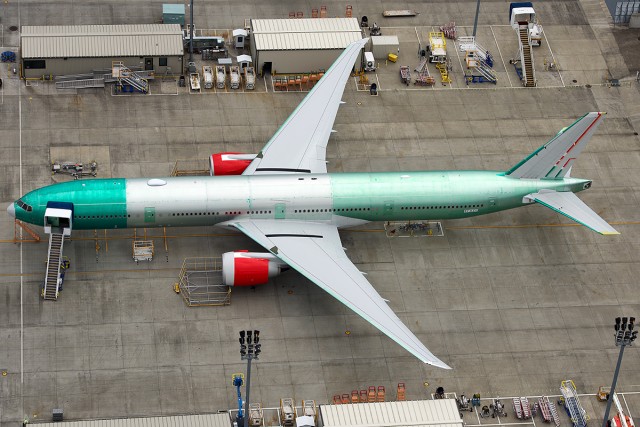
Boeing is one of the largest exporters of anything in the U.S. in terms of dollar value – Photo: Bernie Leighton | AirlineReporter
Before their summer recess, the U.S. Congress didn’t get many things finished; some would say intentionally. Most crucial for those of us in the aviation realm is the “sunsetting” of the U.S. Export-Import Bank. What is this bank, exactly? Well, it’s almost more of an underwriter.
Founded in 1934 by executive order, but affirmed into its own agency by law in 1945, the Export-Import Bank of the United States exists to offer insurance, loan guarantees, and other financial products to foreign customers. Why? Well, the goal of the bank is to provide American jobs and revenue to American companies while selling the goods abroad.

Screen shot of the bank’s website, taken on July 2, 2015
Who is America’s largest exporter in terms of real dollar value? Boeing!
What does Boeing do? Well, you are reading this site – you probably have an idea. Boeing, especially Boeing Commercial Aircraft, depends on the Export-Import bank to offer competitive financing rates to international customers. Or, if financing rates have already been obtained externally, offering an extra back stop for customers that do not have a long history of highly-rated credit.
The Ex-Im bank is not a lender of last resort – they are a paramount of financial virtue and do everything by the book. More importantly for those of us in America, they can sometimes offer better rates than the commercial markets in the name of continuing U.S. trade. Truly, to explain the Ex-Im bank’s importance would require a thesis-length article with lots of graphs. No one, but me, wants to read that. So let’s keep it simple, shall we?
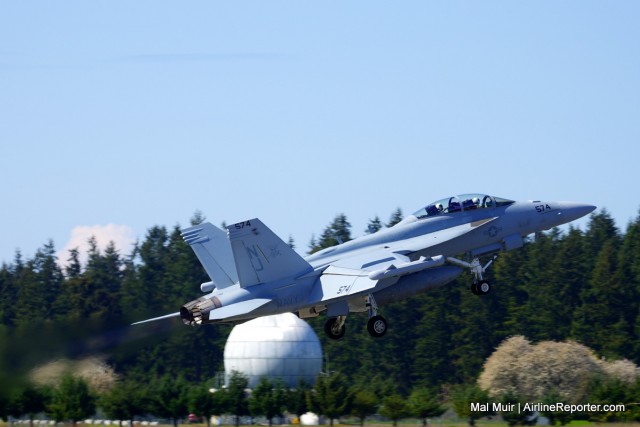
An EA-18G Growler from VAQ-129 climbs out of OLF Coupeville in full afterburner
Picture this: the sun is shining, the sky is blue, and yellow dandelions are beginning to bloom in the green grass. Sounds pretty good, right? As AvGeeks, what could make this better? Well, how about the sound of jets? Not just any jets but fast moving jets, the kind that are flown by the U.S. Navy.
Interested? You might want to head about 90 minutes northwest of Seattle and check out the NOLF (aka OLF) Coupeville. I recently got to experience all of the above, and more, and figured I should share what I experienced.
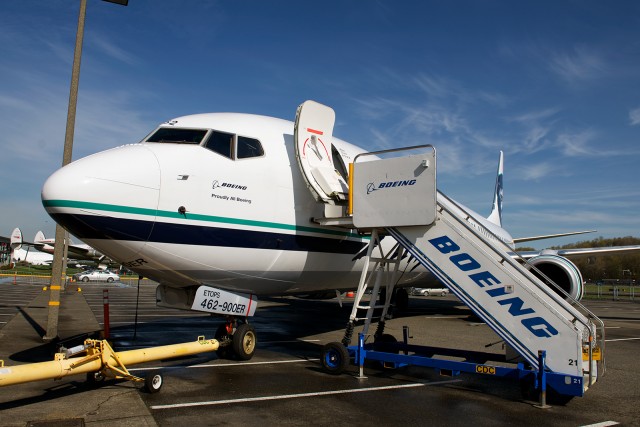
It’s not every day that you see any sort of 737 in the Museum of Flight parking lot – Photo: Bernie Leighton | AirlineReporter
Over the past few years, Alaska Airlines has been making gradual enhancements to its overall product. New seats from Recaro, in-seat power, Wi-Fi from Gogo, Starbucks coffee, and tablet-based in-flight entertainment (IFE). These improvements have all come together to create a product Alaska is calling Alaska Beyond. The most noticeable addition to their product is improving upon their dining options.
To complete the Alaska Beyond project (the last few aircraft will be reconfigured by the end of April), Alaska decided to have a party. Now, that’d be great on its own, but they made it even more impressive by taking a 737-990ER (N462AS, if you wondered) out of service for a day, and gave a two-hour demonstration of the product in flight. Who was to attend? Well, media, stakeholders in the Alaska Beyond product (including Tom Douglas, three-time James Beard award-winning chef), and Alaska’s 0.01% top-tier frequent flyers.
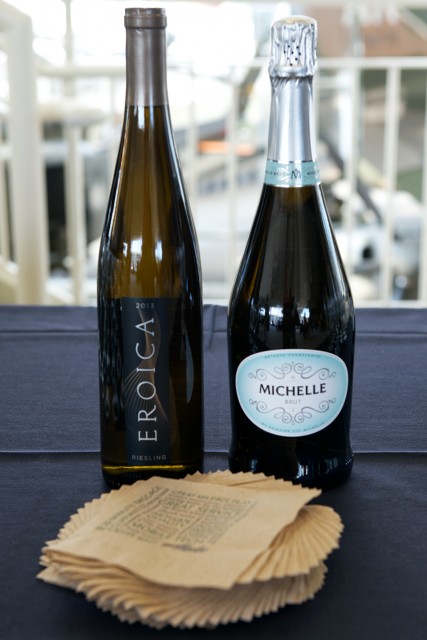
Seattle-area winery Chateau Ste. Michelle has formed a new partnership with Alaska Airlines – Photo: Bernie Leighton | AirlineReporter
Inside the Museum of Flight at Boeing Field, Alaska got the party started with wine from their newest partner, Chateau Ste. Michelle, along with Beecher’s cheese.
After enjoying the ground party, we were ready to head into the sky. We began to head back to the parking lot (yes, the parking lot) to embark on our flight.








